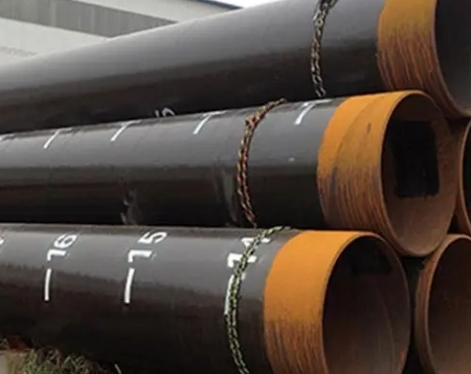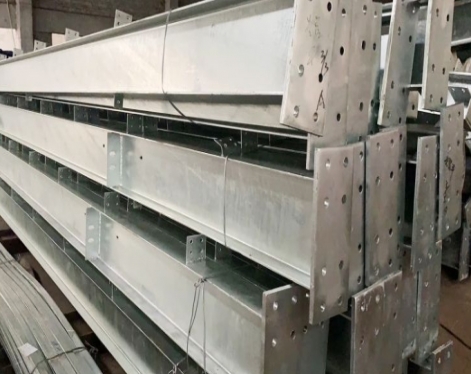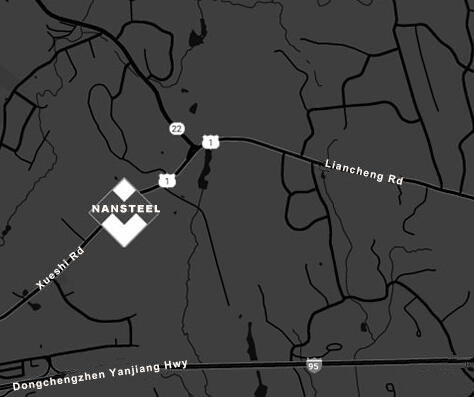In the field of construction and civil engineering, steel pipe piles are an indispensable basic material and are widely used in various large-scale projects, such as bridges, docks, high-rise buildings, etc. They frequently appear on construction sites, providing solid support for the entire building structure, just like the cornerstone of a building. Although they are often hidden underground and cannot be seen directly, they play a vital role and are related to the safety and stability of the entire project.
From the appearance, steel pipe piles are piles made of steel pipes. Although its structure seems simple, it has excellent performance. It is generally made of high-quality steel, with different diameters, lengths and wall thicknesses. It can be customized according to different engineering needs and has strong adaptability. During construction, it can be driven into the ground in a variety of ways to provide stable support for the building. Now, let's take a deeper look at its advantages and disadvantages and see how it plays a key role in foundation engineering.
Advantages of steel pipe piles
1. Strong carrying capacity
The material properties of steel pipe piles give them high rigidity and strong bearing capacity. It is like a strongman, able to carry heavy loads and ensure the safety and stability of the engineering structure. It is suitable for various engineering occasions with high requirements on bearing capacity.
2. Convenient construction and high efficiency
The diversity of construction methods is a highlight of steel pipe piles. They can be sunk into the ground by hammering, static pressure, vibration and other methods. Construction units can flexibly choose appropriate construction methods based on the geological conditions of the construction site, the surrounding environment and engineering requirements. Moreover, the joints of steel pipe piles are simple to connect, usually by welding, which is easy to operate and can quickly complete the connection operation.
3. Pile length adjustment flexibility
In actual engineering projects, geological conditions are complex and changeable, and the depth of the bearing layer in different areas may vary. Steel pipe piles can be cut or welded according to actual needs, and the pile length can be easily adjusted. This flexibility not only improves construction efficiency, but also avoids material waste and improves material utilization.
4. Environmentally friendly and low impact
During the construction process, the amount of soil discharged by steel pipe piles is small. Steel pipe piles have less disturbance to the surrounding soil due to their small amount of soil discharge, which can effectively reduce this negative impact and reduce the risk of damage to surrounding buildings and underground pipelines. They meet the requirements of environmental protection in modern engineering construction and are conducive to achieving green construction.

Disadvantages of steel pipe piles
1. Higher cost
The production of steel pipe piles mainly relies on a large amount of steel. The price of steel itself is relatively high, and during the processing, the requirements for technology and equipment are also relatively high, which makes the material cost of steel pipe piles account for a large proportion. During piling construction, large-scale piling equipment is often required, such as crawler pile drivers, diesel pile drivers, etc. The rental, transportation and operation costs of these equipment are not low. In addition, the construction process of steel pipe piles is relatively complicated and requires professional technicians to operate, and labor costs will increase accordingly.
2. Susceptible to corrosion
Since the main material of steel pipe piles is steel, in a humid environment, especially in areas where they are underwater for a long time or have a high groundwater level, steel pipe piles are very likely to react chemically with water and oxygen, causing rust. In addition, if the soil or groundwater at the project site is acidic or alkaline, it will also cause corrosion damage to the steel pipe piles.
3. Construction noise and vibration
In the process of driving steel pipe piles into the ground, whether the hammer method or the vibration method is used, large noise and strong vibration will be generated. During the hammering construction, the pile hammer continuously hits the steel pipe pile, which will make a loud noise. At the same time, strong vibrations will propagate to the surrounding soil in the form of elastic waves, which may affect the structure of surrounding buildings.
Conclusion
Steel pipe piles play an important role in various large-scale foundation projects due to their strong bearing capacity, convenient and efficient construction, flexible adjustment of pile length, and environmental friendliness, providing a strong guarantee for the smooth progress of the project and structural safety. However, they also have disadvantages such as high cost, susceptibility to corrosion, and high construction noise and vibration. In actual engineering applications, we need to comprehensively consider the specific needs of the project, budget, geological conditions, surrounding environment and other factors, weigh their advantages and disadvantages, and then reasonably select steel pipe piles.
Read more: Treatment Method for Top Deformation of Steel Pipe Piles
From the appearance, steel pipe piles are piles made of steel pipes. Although its structure seems simple, it has excellent performance. It is generally made of high-quality steel, with different diameters, lengths and wall thicknesses. It can be customized according to different engineering needs and has strong adaptability. During construction, it can be driven into the ground in a variety of ways to provide stable support for the building. Now, let's take a deeper look at its advantages and disadvantages and see how it plays a key role in foundation engineering.
Advantages of steel pipe piles
1. Strong carrying capacity
The material properties of steel pipe piles give them high rigidity and strong bearing capacity. It is like a strongman, able to carry heavy loads and ensure the safety and stability of the engineering structure. It is suitable for various engineering occasions with high requirements on bearing capacity.
2. Convenient construction and high efficiency
The diversity of construction methods is a highlight of steel pipe piles. They can be sunk into the ground by hammering, static pressure, vibration and other methods. Construction units can flexibly choose appropriate construction methods based on the geological conditions of the construction site, the surrounding environment and engineering requirements. Moreover, the joints of steel pipe piles are simple to connect, usually by welding, which is easy to operate and can quickly complete the connection operation.
3. Pile length adjustment flexibility
In actual engineering projects, geological conditions are complex and changeable, and the depth of the bearing layer in different areas may vary. Steel pipe piles can be cut or welded according to actual needs, and the pile length can be easily adjusted. This flexibility not only improves construction efficiency, but also avoids material waste and improves material utilization.
4. Environmentally friendly and low impact
During the construction process, the amount of soil discharged by steel pipe piles is small. Steel pipe piles have less disturbance to the surrounding soil due to their small amount of soil discharge, which can effectively reduce this negative impact and reduce the risk of damage to surrounding buildings and underground pipelines. They meet the requirements of environmental protection in modern engineering construction and are conducive to achieving green construction.

Disadvantages of steel pipe piles
1. Higher cost
The production of steel pipe piles mainly relies on a large amount of steel. The price of steel itself is relatively high, and during the processing, the requirements for technology and equipment are also relatively high, which makes the material cost of steel pipe piles account for a large proportion. During piling construction, large-scale piling equipment is often required, such as crawler pile drivers, diesel pile drivers, etc. The rental, transportation and operation costs of these equipment are not low. In addition, the construction process of steel pipe piles is relatively complicated and requires professional technicians to operate, and labor costs will increase accordingly.
2. Susceptible to corrosion
Since the main material of steel pipe piles is steel, in a humid environment, especially in areas where they are underwater for a long time or have a high groundwater level, steel pipe piles are very likely to react chemically with water and oxygen, causing rust. In addition, if the soil or groundwater at the project site is acidic or alkaline, it will also cause corrosion damage to the steel pipe piles.
3. Construction noise and vibration
In the process of driving steel pipe piles into the ground, whether the hammer method or the vibration method is used, large noise and strong vibration will be generated. During the hammering construction, the pile hammer continuously hits the steel pipe pile, which will make a loud noise. At the same time, strong vibrations will propagate to the surrounding soil in the form of elastic waves, which may affect the structure of surrounding buildings.
Conclusion
Steel pipe piles play an important role in various large-scale foundation projects due to their strong bearing capacity, convenient and efficient construction, flexible adjustment of pile length, and environmental friendliness, providing a strong guarantee for the smooth progress of the project and structural safety. However, they also have disadvantages such as high cost, susceptibility to corrosion, and high construction noise and vibration. In actual engineering applications, we need to comprehensively consider the specific needs of the project, budget, geological conditions, surrounding environment and other factors, weigh their advantages and disadvantages, and then reasonably select steel pipe piles.
Read more: Treatment Method for Top Deformation of Steel Pipe Piles









